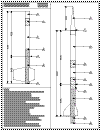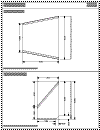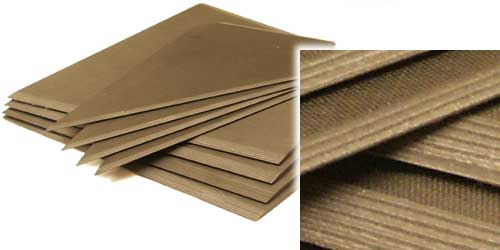Cirrus HV
The Black Rock launch in September/October is the last of the year for AERO-PAC. In 2000, a large group came down from Washington to our launch and flew a bunch of great projects. After that, Kimberly Harms challenged AERO-PAC to a contest for Black Rock XIII (October 6-7 2001). The contest would be, not for altitude, but for velocity.
The contest would be won by the rocket which flew the fastest. Only certified motors were allowed. (This was to be at the regular launch, not on the EX day.)
We knew that they must have some trick up their sleeves. Launching at a 45° angle is not allowed by NFPA rules. Maybe they were going to launch a rocket from the top of a tower downwards. Who knows.
In the end, Chet Geyer and I decided to make an entry into the contest. Not knowing what we would be up against, we decided to go for spectacular. Our rocket would be a loose upscale of the P.M.L. Cirrus (hence the name Cirrus HV for high velocity). It would be a 2-stage minimum diameter 98mm rocket, with an M2500 in each stage.
Unfortunately, real life interfered in our plans (as it is wont to do) and we will not be able to have this rocket ready for the contest. It will probably appear next year as an altitude attempt.
This rocket has been abandoned.
The Pictures
The Design
Chet designed the rocket based on his experience with high altitude flights. The rocket is very simple with largish Nike-style fins on the booster and smaller clipped delta fins on the sustainer. The rocket is three fin, minimum diameter. Below, you can see the two drawings for this rocket (click on them to download the Acrobat PDF files).

|

|
Note how the absolute minimum of structure is used. Most coupling is done using the motor cases. (The carbon tubing has a slightly small I.D. for 3.9" tubing, which is a perfect fit for the AeroTech/Dr. Rocket motor cases.) Stage coupling is done using the sustainer motor. I had the knurling turned down on a 98mm aft closure so that it would make a continuous O.D. with motor case.
Because velocity is the goal, we wanted to keep the rocket as light as possible. I had some 3.9" all-carbon fiber tubing I'd purchased a few years ago which seemed ideal for the purpose (with a layer of 'glass for strength and a sanding veil). We decided to make the fins out of carbon plate and reinforce them tip-to-tip with carbon fiber cloth.

In the picture above, you can see the eight fins cut out of the carbon plate and beveled at the leading and trailing edges. The carbon plate looks great and the fins came out really nicely.